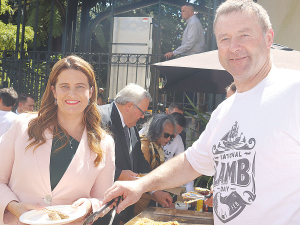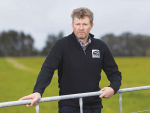Farmers and wool carpet manufacturers are welcoming a Government decision to use wool fibre products in the construction and refurbishment of state buildings.
Today, Economic Growth Minister Nicola Willis and Associate Agriculture Minister Mark Patterson announced that from 1 July, government agencies would be directed to use woollen fibre products where practicable and appropriate in the construction and refurbishment of government buildings.
In the past two years, successive governments have come under fire when government departments had opted towards contracts with synthetic carpet manufacturers in their procurement process for carpet refurbishments.
Most recently, Kainga Ora, New Zealand’s state housing authority, came under fire for opting to only allow bids from synthetic carpet manufacturers for upgrades to its housing, a move it subsequently backtracked on.
The Government’s announcement delivers on a promise made by the National Party in its coalition agreement with New Zealand First.
“We’re showing our commitment to woollen fibres by leveraging government spending, to provide more targeted opportunities for wool producers,” says Willis. “This will help to increase jobs, employment, and drive economic growth.”
She says the new requirement will encourage innovation in the building materials industry which will in turn lead to more investment and new markets opening up.
“Woollen fibres have a wide range of uses in buildings, including carpet, upholstery, insulation, and acoustic panels,” she adds.
Patterson says the new requirements go beyond the immediate aims of procurement.
“They demonstrate the Government’s support for the wool industry and farmers by encouraging increased demand for woollen fibre products in government-owned buildings,” he says.
“We’re walking the talk,” he adds. “This move will hopefully inspire private businesses to follow suit.”
The move has been welcomed by Federated Farmers’ meat and wool chair Toby Williams who says the decision is a vote of confidence in the future of New Zealand wool as a natural and sustainable product.
“It’s fantastic to see the Government recognizing so strongly the value of New Zealand-grown wool and backing the world-leading farmers who produce it,” Williams says.
“Our sheep farmers work incredibly hard to produce a high-quality, environmentally friendly, and sustainable fibre that is second to none globally,” he adds.
He says the announcement isn’t just a win for Kiwi sheep farmers.
“It’s a win for the environment and future generations.”
Meanwhile, Wools of New Zealand chief executive John McWhirter says that by promoting the use of wool in government buildings, the Government is supporting local farmers and rural communities while reinforcing the country's global reputation as a leader in natural, sustainable fibre production.
“Government leadership in this area can create meaningful demand for New Zealand wool,” he says. “It’s a move that will help drive growth across the wool supply chain, from farm to finished product, while also highlighting the environmental benefits of choosing natural fibres over synthetics.”
Andy Caughey, chief executive of advocacy and resource hub Wool Impact, is also applauding the announcement, saying it will drive demand and value for wool, improving the profitability of sheep farming.
“We’ve seen unprecedented product innovation using wool in recent years,” Caughey says. “This innovation is based on wool’s natural ability to contribute to healthy interior spaces, its technical performance, its biodegradability at end of life, and the important role sheep farming plays in the wellbeing of our rural communities.”
“Initiatives like this at a government level send the right signals for brands to back wool, both here in Aotearoa New Zealand and globally, which in turn improves demand for wool fibre.”



















